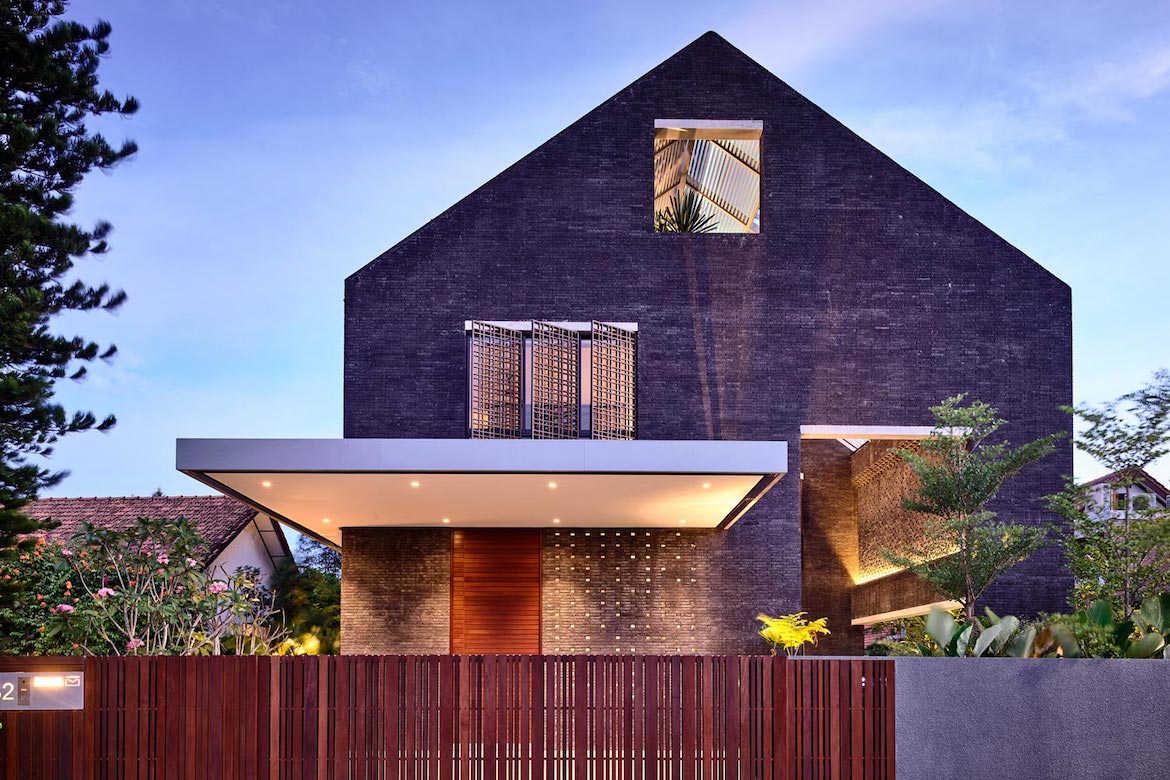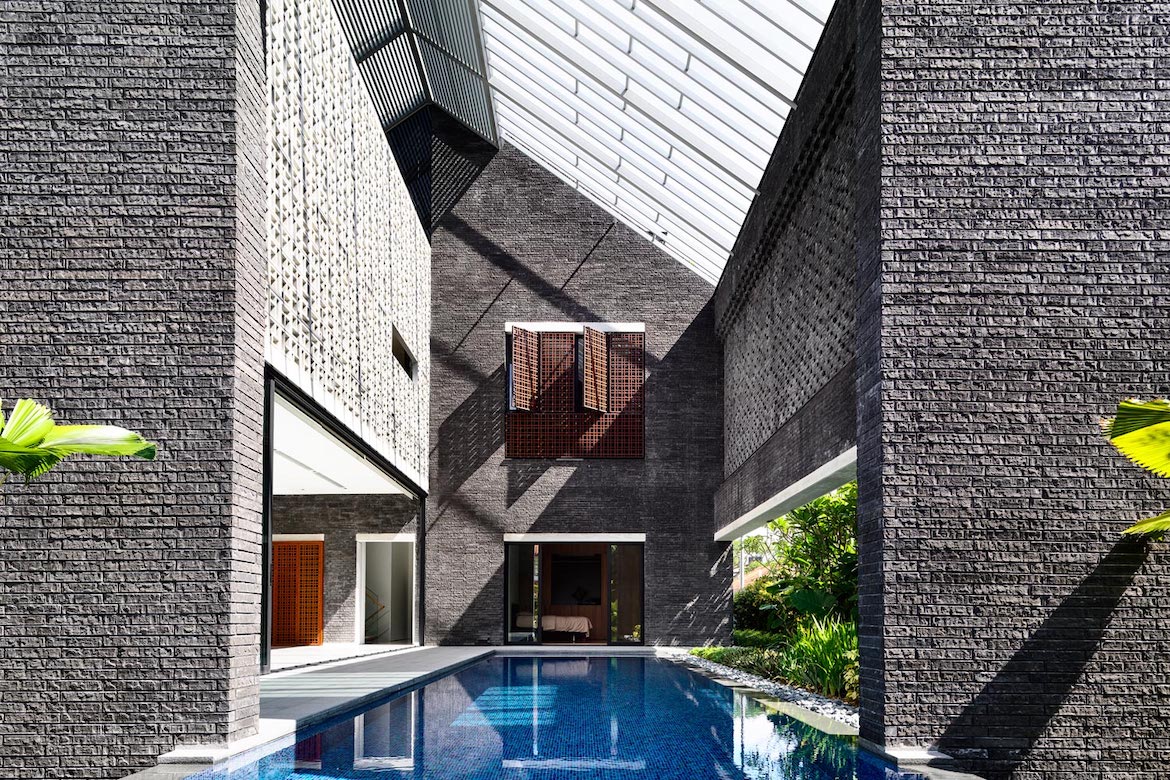
Room Without Roof, by HYLA Architects. Image by Derek Swalwell
-
15 March 2022
As 2022 begins, we settle into life in a new year and begin to think of how we are actually living as we all negotiate a new normal after the last two years. There is – after all – something aspirational in our approach to residential design, some correlation between the home and the life we want. How our dreams of lifestyles and work/life balance have shifted over the last period are manifesting into the best residential design, indicating a move away from open, minimalist, expansive spaces to something decidedly more connected, where shape, materials and furniture brings us closer to our earth and to each other.
In 2022, we look to The Living Space category in the INDE.Awards as a barometer of these shifts, a pool of outstanding residential spaces that showcase how the Indo Pacific is responding to the changing demands on home life. This category is always an attention-grabbing one, with large and small homes, pared back minimal or downright luxurious interiors, rubbing shoulders with each other. Architectural talent is on show, with residences that set the design agenda for not just today but the future as well.

Room Without Roof, by HYLA Architects. Image by Derek Swalwell
Over the past six years, the INDE.Awards has featured some of the most important and outstanding homes from across our region. Built for climate and culture, to fulfil a brief, or designed as a singular architectural statement, the homes that have taken the top accolade as winner of The Living Space are all exemplars. Each year, this category has been supported by Gaggenau, who’s collection of luxury home appliances have similarly set the standard for exception design in the region.
As a judge in this year’s INDE.Awards, Asha Sairam, Associate at Studio Lotus in India reflects on the aspects that make the design of a home special.
“The functionality, flow and efficiency of the spaces to adapt to the needs of the inhabitants is key to creating an ideal dwelling. How a designer can juxtapose materials, decor, and details within a space to reflect the homeowner’s personality is also a critical aspect of residential design. Another aspect brought into sharp focus, especially in the pandemic age, is the dwelling’s relationship with the outdoors. I’m interested in discovering how designers have tackled the inside-outside connection in their projects.” she says.

2022 INDE.Awards Jury Member, Asha Sairam (Associate, Studio Lotus)
Looking back on the category’s past winners, it has been a field dominated by Singaporean architects, where the climactic and spatial constraints of the city have produced some ingenious solutions to residential design. From the compact, intelligent design of PROJECT #13 to the sun-drenched, cathedral like home of Room Without Roof, the category and its shortlist has showcased typologies that cater to all footprints and contexts. Indeed the category’s first winner, Cornwall Gardens, defy typical metropolitan architecture with an expansive, open home, complete with a terraced roof garden and Koi carp pond.

PROJECT #13, by STUDIO WILLS + Architects. Image by Finbarr Fallon and Khoo Guo Jie
Perhaps most memorable is Expandable House, an Indonesian project by Urban-Rural Systems (Future Cities Laboratory, Singapore-ETH Centre) which took home the Living Space award in 2020. Flexible in concept and design, Expandable House is an adaptable dwelling designed specifically for the fringes of cities and towns in Asia that are facing rapid urbanisation. The home offers changing configurations that can respond to the resource consumption and expenditure of its residents.

Expandable House, by Urban-Rural Systems (Future Cities Laboratory, Singapore-ETH Centre). Image by Carlina Teteris, Dio Guna Putra
Professor Dr. Stephen Cairns, of Future Cities Laboratory commented on the design of the home and its place in a shifting rhetoric of residential architecture:
“The advent of Covid-19 changed the way we live in quite fundamental ways. While research on the consequences of the pandemic for everyday life and how living spaces might be configured is still going on, and will do for many years to come, we have all experienced different ways in which work, care, leisure and rest are organised in the domestic space. In many cities in Asia, everyday life before Covid-19 was already multifunctional. That is, the domestic space was also an income-generating space, be it in the form of home-based services (tailoring, computer repair, cottage industry) or home kitchens serving street-facing stalls.
Designing flexibility into the spatial and structural logics and resource metabolism of dwellings and neighbourhoods of the near future is essential if we are to better support the fundamental changes that are already underway.”

Expandable House, by Urban-Rural Systems (Future Cities Laboratory, Singapore-ETH Centre). Image by Carlina Teteris, Dio Guna Putra
As a long-standing supporter of The Living Space category and partner with the INDE.Awards, Gaggenau understands great design and is renowned for singular products that complete a kitchen whether that is an oven, cooktop, refrigerator, wine cabinet, dishwasher or even a coffee machine. Ensuring a project reaches full creative potential includes design with fine products such as Gaggenau’s, where the best is not a luxury but simply a necessity.

Cornwall Gardens, by CHANG Architects. Image by Albert Lim KS
“Our passion for design and quality stand at the forefront of Gaggenau,” comments Andrea Cleveland, Category and Brand Manager of Gaggenau. “We develop home appliances for the private chef that combine form and function, understanding that design is the first visual touchpoint with our products. Each Gaggenau appliance is designed to be a statement piece in its own right, and at the same time has the ability to be subtle in its existence to bring the architect’s vision of the living space to life.”
.
Entries to the 2022 INDE.Awards close on 10/03/2022 at 23:59 AEDT. Entries can be started, modified and submitted here and should be entered according to the Awards’ category criteria.
The INDE.Awards, Living Space category is proudly partnered by Gaggenau.
Enter your project now and connect with your country and the Indo-Pacific region.
